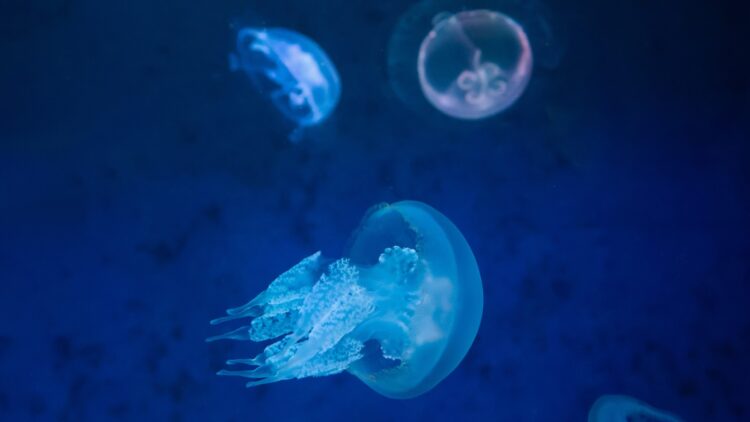The ocean is a vast and scary place, and the creatures we can find within it are no exception. Studying these creatures is the job of marine biologists, but as much as they know, they can still be surprised by the marvels of nature, and that is exactly what happened in September 2021 to a group of researchers at the University of California. They were studying a tank of jellyfish, specifically Tripedalia cystophora, known for their surprisingly advanced eyes, when something caught their attention, some tiny creatures that were not part of the study and that had a total of 28 eyes.
The unexpected species belonged to the Bougainvillia cf. muscus species, a jellyfish from the hydrozoan group, and became the new object of study due to its rare physiognomy. Aide Macías-Muñoz, who was leading the team, decided to pivot the study into researching and sequencing the genome of this fascinating creature and the results were fascinating both to the scientific community and the world as a whole.
The 28 eye jellyfish, a marvel of nature
After sequencing, the genome came out to about 375 million base pairs, split into 350 fragments and more than 46,000 coding genes, which is more than most other cnidarians that have been sequenced. While this might mean a lot to scientists, regular people need a bit more detail to know why this is impressive.
The creature, as an adult, forms marginal bulbs, and each of these has seven simple light-sensing organs called ocelli. For those following along with the math, with four bulbs, that totals up to 28 eyes. But these eyes are not like the image-forming eyes humans or some other jellyfish have, they can just sense light changes, enough for the animal to adjust its movement or know which direction to swim in.
Something else they found in the genetic code that was a breakthrough is that that, when they analyzed genes related to vision, they found 20 different opsin-like genes (to compare, humans use just four opsins for vision) and these jellyfish opsins were completely different from the ones found in Tripedalia, the original jellyfish they were studying, which points to an entirely different evolutionary route for vision.
The team also uncovered genetic material linked to eye development, how light signals are processed, and how visual pigments get recycled. All signs suggest that Bougainvillia has a basic but fully functional visual system. As the team explained (translated) “This new genome is a great resource for comparative studies to understand how animals evolved and what genetic toolkit their last common ancestor had.”
Eyes have always been one of evolution’s most unknown developments and even Darwin admitted in a letter that thinking about the eye gave him “a shudder” because of how intricate it is. But the variety of eyes in nature tells us that they did not all come from a single evolutionary event. In fact, among cnidarians alone, molecular studies show that eyes have evolved independently at least nine separate times, which makes them increasingly hard to study and understand, as the more we know about them, the more complex they become.
Looking ahead, the team is hoping to dig into some other interesting questions that have stumped scientist for a while, like how these jellyfish can regenerate their ocelli. Apparently, if they lose one, they can just grow it back which is not something many animals can do, and figuring out how it works might unlock some secrets about how sensory organs develop and repair.
To really understand which genes do what, though, they will need more individuals and more detailed studies, which is hard to do in this current economic climate and with species as rare as this one. Functional experiments and transcriptomics are on the to-do list, but for now, resources are limited.

